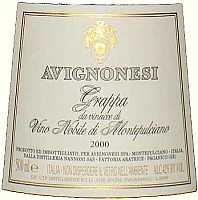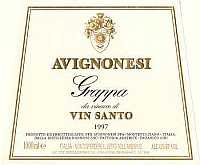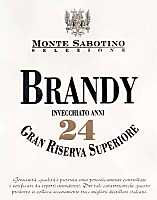
Wine Culture and Information since 2002 - Volume 22
 Wine Culture and Information since 2002 - Volume 22 |
|
Globe ArtichokeThe beautiful nymph Cynara, with ash blond hair, for having rejected Jupiter, father of gods and humans, god of light, was transformed into a thorny plant: artichoke |
|
Globe artichoke, Cynara cardunculus, is a perennial herbaceous plant which can reach 1.5 meters in height, belonging to the family of asteraceae. The term artichoke derives from the Arab al-kharshûf, literally “thorny plant”. Artichoke is cultivated in all the Mediterranean area, in particular in Italy, Spain and France, whereas the main countries of the American continent are United States and Peru. Artichoke is a typical Mediterranean plant and its natural cycle is from autumn to spring, sharing the same origin with cardoon. There are many ways to classify artichokes: according to the presence and development of thorns are classified in thorny or defenseless. Thorny artichokes are the one having pointed leaves, whereas in the other species the end of leaves is round. Another distinction is made according to color: purple colored artichokes and green colored artichokes. Another classification is made according to the phenological cycle, by classifying “autumnal” and “spring” artichokes. Autumnal varieties undergo a forced reproductive cycle, whereas spring artichokes are suited for classic cultivation. There are other artichokes varieties, of which the most famous ones in Italy are spinoso Sardo, Catanese, verde di Palermo, Romanesco, violetto di Toscana and violetto di Provenza.
|
Globe artichokes our ancestors ate, are not the same as the ones usually used in modern cooking. At those times there was a wild variety, harder, smaller and more thorny. The small blue flowers of artichokes were used for curdling milk in the production of cheese. Artichoke probably comes from Ethiopia and arrives in Europe through Egypt. Artichoke is mentioned in Pliny the Elder's book Naturalis Historia, in which are praised its depurative and tonic properties, as well as aphrodisiac properties and - it seems - it was particularly effective against baldness. The properties of artichoke are also mentioned by Theophrastus in his History of Plants and by Hesiod in his book Works and days. In Decio Bruno Columella's De Re Rustica, it is read artichoke was cultivated both for nutritional purposes and as a medicinal plant. Globe artichoke certainly derives from cardoon and their common origins can be traced back to North Africa and Egypt. The plant was known by ancient Romans as Cynara, whereas ancient Greeks called it Kinara, who believed the plant had an aphrodisiac effect, probably because of the beauty of the nymph Cynara. According to mythology, the beautiful nymph with ash blond hair, for having rejected the powerful Jupiter was transformed into a thorny plant: the artichoke. Artichoke has always been associated, because of its shape, to grumpy and “ticklish” persons, however having a good heart. Modern Artichoke was unknown in the Middle Age. It is very likely, horticulturist at those times have continued or resumed the selection probably began by Etruscans, by selecting plants and trying to transform wild artichoke - or cardoon - into the “modern” artichoke. For centuries ignored by the mass, it will become common at the end of the Middle Age because of the massive import from Africa and, more precisely, from Ethiopia. According to some documents, artichoke seems to be arrived in Tuscany first and then in Veneto. In the sixteenth century becomes pretty common in Sicily, also favored by an ideal climate. In Sicily the artichoke becomes very common, as to be used in many dishes of the island, with the name capòzzula, derived from caput - “head” - that is the head of artichoke to be cut. Wild artichoke is sold boiled in the island's booths along streets and it is consumed during breaks, as a snack or as an excuse to have a nice glass of wine. Tradition has it was Caterina De' Medici, in occasion of the marriage with Henry II of France, to introduce the consumption of artichokes in cooking. It is said also Louis XIV of France, known as “sun king”, liked artichokes. It is known that in the second half of 1400s artichokes were introduced in Naples and Florence. According to Pietro Andrea Mattioli - a scholar from Siena, doctor, botanist, translator and commentator of ancient pharmacology books, one of the first natural scientists of Europe after the Middle Age - in the 1500s artichoke was already common in Tuscany. It was the Dutch to introduce artichokes in England, whereas Spaniards and the French introduced them in America, in the eighteenth century, more precisely in the territories of modern California and Louisiana, where today cardoons are considered as weed plants.
|
||||||||||||
|
Globe artichoke is a very interesting food, has a nice taste and few calories - 22 for 100 grams - characteristics making artichokes a very satiating food as well as versatile in cooking. Another very interesting characteristic, in particular in these times where particular attention is paid to “light” foods, with no fat or cholesterol, is its richness in soluble fiber, that is the kind of fiber useful for eliminating exceeding cholesterol. The high content in iron makes artichoke an ideal food for anyone suffering from anemia and diabetes. It is rich in cynarine, a substance favoring the secretion of bile and diuresis. Artichokes contain hepatoprotective substances: cynarine contained in artichoke seems to lower the level of cholesterol, however, in order to get a real benefit, it should be consumed a quantity of 100-300 grams a day and for a pretty long period of time. Positive effects of artichoke, such as the lowering of cholesterol, is sometime vanished by the cooking method: on this regard fatty and unctuous dishes, such as artichoke Jewish style, fried artichoke or kept in oil, are not recommended. From artichoke leaves is extracted a bitter substance used as a depurative or digestive. Artichokes are usually available all year long and, in case they cannot be found fresh, they can be bought frozen or canned, kept in oil. Artichokes kept in oil must be drained and carefully washed as they usually tend to keep a lot of oil and salt, therefore rich in fats and sodium. Before consumption, artichokes must be cleaned. First of all are removed all the leaves with thorns and all the external hard and bitter leaves, then it is cut the upper part. Also any internal hair must removed. The stalk must be cleaned from leaves as well as any external hard and bitter part. Cleaned this way, artichokes must be kept in water added to lemon juice until the moment of cooking, in order to avoid them to become brown. In case of fresh artichokes with stalk, they can be kept for some time in water, just like flowers. Small artichokes, harvested at the end of the season, can be used for the preparation of the tasty artichokes kept in oil. At the moment of purchase it is recommended to make sure about artichoke's freshness, by checking they are hard and compact, they must be heavy according to their weight, leaves must be closed, not wrinkled and with a bright dark green color. Artichokes must not show any stain or bruise. The stalk must be firm and stick and must not show any yellow color. In case in a long stalk are found leaves, make sure they are fresh. Another freshness factor to be checked after purchasing is the absence of internal hair. Despite it is always recommended to consume them as soon as possible, artichokes can be kept in the fridge, wrapped in paper, for a maximum of three days. In case it is wished to consume artichokes off season, it can be used frozen artichokes, as well as canned artichokes kept in oil. Most of the times, canned artichokes are prepared with second choice artichokes and kept in oil. Young artichokes, fresh and tender, are excellent to be consumed raw, seasoned with oil, thinly sliced and added to salads. Riper artichokes are preferably consumed cooked and are best for the preparation of pies and risotto. According to a nutritional point of view, one hundred grams of raw artichokes provide 22 kcal and contain: 91,30gr of water; 2,7gr of proteins; 2,5gr of carbohydrates; 0,2gr of fats; 0,5gr of starch; 1,9gr of soluble sugar; 5,5gr of fiber; 0gr of cholesterol colesterolo; 0,018mg of vitamin A; 0,06mg of vitamin B1; 12mg of vitamin C; 0,19mg of vitamin E; 86mg of calcium; 1mg of iron; 45mg of magnesium; 376mg of potassium; 133mg of sodium. Artichokes are not recommended to mothers who are breast feeding, as it impedes the production of milk and to anyone suffering from biliary stones or however in case of the occlusion of the biliary duct.
|
AquavitaeReview of Grappa, Distillates and Brandy |
|
|
| Distillates are rated according to DiWineTaste's evaluation method. Please see score legend in the "Wines of the Month" section. |

|
|
Grappa di Vino Nobile di Montepulciano 2000 |
|
| Avignonesi (Tuscany, Italy) | |
| (Distiller: Nannoni) | |
| Raw matter: Pomace of Prugnolo Gentile, Canaiolo Nero, Mammolo | |
| Price: € 19.00 - 50cl | Score: |
| This grappa is colorless, limpid and crystalline. The nose denotes intense, clean, pleasing and refined aromas of blackberry, raspberry, violet, plum, licorice and black cherry with almost imperceptible alcohol pungency. In the mouth has intense flavors with perceptible alcohol pungency that tends to dissolve rapidly, good correspondence to the nose, pretty dry, intense flavors. The finish is persistent with flavors of plum and black cherry. This grappa is distilled with steam operated discontinuous alembic still. Alcohol 42%. | |

|
|
Grappa di Vin Santo 1997 |
|
| Avignonesi (Tuscany, Italy) | |
| (Distiller: Nannoni) | |
| Raw matter: Pomace of Grechetto, Malvasia Toscana, Trebbiano Toscano | |
| Price: € 48.60 - 1l | Score: |
| This grappa shows a brilliant amber yellow color, limpid and crystalline. The nose reveals intense, clean, pleasing and refined aromas of hazelnut, vanilla, honey, licorice, dried fig, chocolate and praline with almost imperceptible alcohol pungency. In the mouth has intense flavors with perceptible alcohol pungency which tends to dissolve rapidly, good correspondence to the nose, balanced sweetness, pleasing roundness, intense flavors. The finish is persistent with flavors of honey, licorice and dried fig. This grappa is distilled with steam operated discontinuous alembic still and ages in barrique for three years and for at least 2 years in bottle. Alcohol 42%. | |

|
|
Grappa di Chardonnay |
|
| Distilleria Zanin (Veneto, Italy) | |
| Raw matter: Pomace of Chardonnay | |
| Price: € 10.00 - 70cl | Score: |
| This grappa is colorless, limpid and crystalline. The nose reveals intense, clean, pleasing and refined aromas of pear, banana, hazelnut, apple and broom with almost imperceptible alcohol pungency. In the mouth has intense flavors with perceptible alcohol pungency which tends to dissolve rapidly, good correspondence to the nose, balanced sweetness, agreeable. The finish is persistent with flavors of pear, banana and hazelnut. This grappa is distilled with a discontinuous alembic still. Alcohol 40%. | |

|
|
Brandy Stravecchio Invecchiato 24 anni Gran Riserva Superiore Monte Sabotino |
|
| Distilleria Zanin (Veneto, Italy) | |
| Raw matter: Blend of wines | |
| Price: € 30.00 - 70cl | Score: |
| This brandy shows a deep amber yellow color, limpid and crystalline. The nose reveals intense, clean, pleasing, refined and elegant aromas of chocolate, tobacco, vanilla, praline, prune and honey with almost imperceptible alcohol pungency. In the mouth has intense flavors with perceptible alcohol pungency which tends to dissolve rapidly, excellent correspondence to the nose, balanced sweetness, pleasing smoothness, intense flavors. The finish is very persistent with flavors of chocolate, prune and honey. This brandy is distilled in copper alembic still and ages in oak casks. Alcohol 40%. | |
Wine Parade |
|
|
| The best 15 wines according to DiWineTaste's readers. To express your best three wines send us an E-mail or fill in the form available at our WEB site. |
| Rank | Wine, Producer | |
|---|---|---|
| 1 |
| Nero al Tondo 2001, Ruffino (Italy) |
| 2 |
| Don Antonio 2003, Morgante (Italy) |
| 3 |
| Sagrantino di Montefalco Collepiano 2003, Arnaldo Caprai (Italy) |
| 4 |
| Chianti Classico Riserva Novecento 2000, Dievole (Italy) |
| 5 |
| Amarone della Valpolicella Classico Costasera 2001, Masi (Italy) |
| 6 |
| Wine Obsession 2001, Vignamaggio (Italy) |
| 7 |
| Soave Classico Monte Alto 2004, Ca' Rugate (Italy) |
| 8 |
| Amarone della Valpolicella Classico 2000, Zenato (Italy) |
| 9 |
| Sforzato di Valtellina Canua 2001, Conti Sertoli Salis (Italy) |
| 10 |
| Barolo Cannubi Boschis 2001, Sandrone (Italy) |
| 11 |
| Brunello di Montalcino 1999, Castello Banfi (Italy) |
| 12 |
| Sagrantino di Montefalco 2003, Antonelli (Italy) |
| 13 |
| Barolo Bussia 2001, Prunotto (Italy) |
| 14 |
| Mater Matuta 2003, Casale del Giglio (Italy) |
| 15 |
| Collio Bianco Col Disôre 2004, Russiz Superiore (Italy) |
|
||||||||
|
DiWineTaste Polls
|
| |||||||
Privacy Policy | |||||||


| Copyright © 2002-2024 Antonello Biancalana, DiWineTaste - All rights reserved |
| All rights reserved under international copyright conventions. No part of this publication and of this WEB site may be
reproduced or utilized in any form or by any means, electronic or mechanical, without permission in writing from DiWineTaste. |